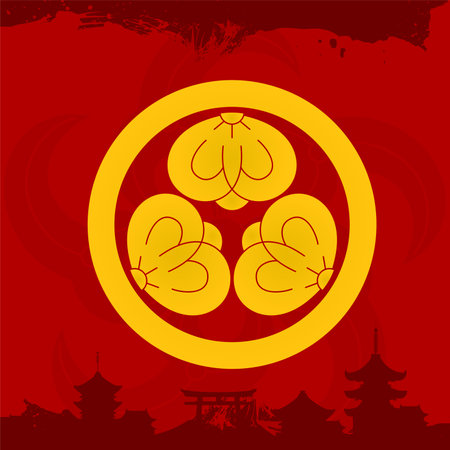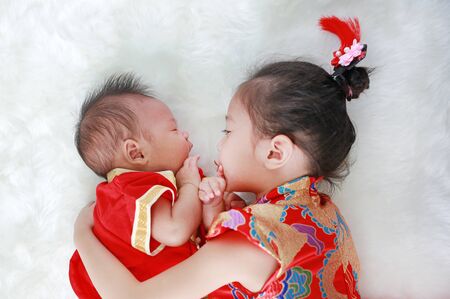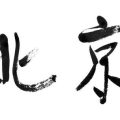1. Understanding Feng Shui in Modern American Homes
Feng Shui, an ancient Chinese practice, focuses on creating harmony and balance within a living space. It’s all about arranging your home in a way that encourages positive energy flow—what the Chinese call “Qi.” Today, more Americans are embracing Feng Shui not only for its beautiful design principles but also for its promises of prosperity, health, and overall well-being. Let’s explore how these age-old ideas connect with modern American values and how you can start applying them to your own home.
What is Feng Shui?
Feng Shui translates to “wind” (Feng) and “water” (Shui), two elements associated with good fortune and health in traditional Chinese culture. The main goal is to create spaces that support the occupants’ mental, physical, and emotional well-being.
Core Principles of Feng Shui
| Principle | Description | American Lifestyle Connection |
|---|---|---|
| Balance (Yin & Yang) | Harmonizing opposite energies for a peaceful environment. | Promotes work-life balance and comfortable living. |
| Five Elements | Integrating wood, fire, earth, metal, and water into home decor. | Adds variety and warmth through textures and colors. |
| Bagua Map | A tool to map out areas of your life onto your home layout. | Helps personalize spaces for family, career, or health goals. |
| Kua Number | Your personal number based on birth year and gender, guiding optimal directions for health and prosperity. | Makes home orientation unique to each resident’s needs. |
| Flow of Qi | Arranging furniture and décor to allow energy to move freely. | Encourages open layouts and clutter-free spaces for better comfort. |
Why Americans Love Feng Shui Principles
The core ideas behind Feng Shui—balance, harmony, well-being—mirror what many Americans value in their homes. A peaceful atmosphere supports relaxation after a busy day. Healthy energy flow helps everyone feel more comfortable. Plus, as more people work from home or seek ways to improve wellness, Feng Shui’s focus on mindful arrangement fits right in with popular trends like minimalism, decluttering, and self-care routines.
The Home as a Sanctuary
In today’s fast-paced world, the American home is increasingly seen as a sanctuary—a place to recharge and find peace. By bringing in Feng Shui principles such as natural light, plants (wood element), water features, or soothing color palettes, you’re actually creating an environment that supports your family’s physical and emotional health. Even small adjustments like moving furniture or choosing artwork with intention can make a noticeable difference in how you feel at home.
2. The Kua Number: Your Personal Feng Shui Code
What is the Kua Number?
The Kua Number (also known as Gua Number) is a key concept in Feng Shui that reveals your personal energy profile. Think of it as your unique Feng Shui code, similar to a zodiac sign, but specifically used to guide how you set up your home and workspace for maximum health, prosperity, and harmony. Knowing your Kua Number helps you identify which directions are most beneficial for you.
How to Calculate Your Kua Number
Calculating your Kua Number is easy and requires only your year of birth and gender. Here’s a step-by-step guide:
- Add together the last two digits of your birth year. For example, if you were born in 1987: 8 + 7 = 15.
- If the result is two digits, add those digits together until you get a single digit: 1 + 5 = 6.
- If you are male: Subtract this number from 10 (for people born before the year 2000) or from 9 (for people born in or after 2000). For example, if born in 1987 and male: 10 – 6 = 4.
- If you are female: Add 5 (before 2000) or add 6 (in or after 2000) to your single digit result. If the sum is two digits, add them together again to get a single digit. For example, if born in 1987 and female: 6 + 5 = 11 → 1 + 1 = 2.
Kua Number Calculation Table
| Birth Year | Gender | Calculation Steps | Your Kua Number |
|---|---|---|---|
| 1987 | Male | (8+7=15; 1+5=6; 10-6) | 4 |
| 1995 | Female | (9+5=14; 1+4=5; 5+5=10; 1+0=1) | 1 |
| 2003 | Male | (0+3=3; 9-3) | 6 |
| 2010 | Female | (1+0=1; 1+6=7) | 7 |
What Does Your Kua Number Reveal?
Your Kua Number identifies which compass directions support your energy best. These directions can help you choose where to place your bed, desk, or even face when working or relaxing at home. There are two main groups: East Group (Kua Numbers: 1, 3, 4, and 9) and West Group (Kua Numbers: 2, 6, 7, and 8). Each group has its own set of lucky directions.
Kua Groups and Best Directions Table
| Kua Number | Kua Group | Your Best Direction for Prosperity & Health |
|---|---|---|
| 1, 3, 4, 9 | East Group | East, Southeast, North, South |
| 2, 6, 7, 8 | West Group | West, Northwest, Southwest, Northeast |
How to Use This Information at Home?
If your Kua Number is part of the East Group, try to position your bed or work area so you face one of your group’s favorable directions. The same goes for West Group individuals—orient yourself toward your best directions whenever possible. This simple adjustment can enhance positive energy flow for better health and more opportunities in life.

3. Mapping Out Your Home for Success and Wellness
Understanding the Power of Your Kua Number
Your Kua Number is a key part of Feng Shui that helps you discover your personal lucky and unlucky directions. By aligning important areas of your home—like your bedroom, office, and entryway—to support your Kua Number, you can boost both prosperity and health. Lets explore how to make these adjustments in a simple, practical way, using American home layouts and familiar spaces.
Key Spaces to Focus On
| Space | Why It Matters | Tips for Alignment |
|---|---|---|
| Bedroom | The place where you rest and recharge; impacts health and relationships. | Place your bed so that your head points toward your best direction according to your Kua Number. Keep electronics minimal to promote restful energy. |
| Home Office/Workspace | The center of productivity and career growth, especially for remote workers. | Position your desk so you face your auspicious direction while working. Avoid sitting with your back to the door or window if possible. |
| Entryway/Foyer | The first area energy (Chi) enters your home; sets the tone for all visitors and residents. | Keep this space clutter-free and well-lit. Place a welcome mat or uplifting artwork facing your lucky direction. |
How to Find Your Best Directions
Your Kua Number reveals four positive (auspicious) directions: Success, Health, Love, and Personal Growth. Here’s a quick reference:
| Kua Group | Auspicious Directions |
|---|---|
| East Group (Kua 1, 3, 4, 9) | North, East, South, Southeast |
| West Group (Kua 2, 6, 7, 8) | Southwest, West, Northwest, Northeast |
Example: Aligning Your Bedroom for Better Sleep and Relationships
If you have a West Group Kua Number (like 6), try arranging your bed so the headboard is facing West or Southwest. Add calming decor—such as soft blue or green bedding—to enhance harmony and relaxation.
Practical Tips for Every Room
- Living Room: Arrange seating so you can see the door but aren’t directly in line with it. This welcomes good opportunities without overwhelming energy flow.
- Kitchen: Keep counters clear. Use bright lighting to energize the space and place fresh fruit on the counter as a symbol of abundance.
- Kid’s Room: Position their bed or study area toward one of their lucky directions for better focus and sleep.
A Few More Easy Adjustments:
- Add plants near windows to invite vitality but avoid blocking pathways.
- Avoid mirrors facing the bed or front door—they reflect energy away instead of inviting it in.
By mapping out each room based on your Kua Number, you’re not just decorating—you’re actively inviting more success and wellness into your American home!
4. Adapting Feng Shui and Kua Principles with American Decor
Bringing Feng Shui to Life in American Homes
Feng Shui isn’t just about ancient Chinese objects or traditional layouts—it can easily blend with modern American decor. Understanding your Kua number helps you identify your best directions for prosperity, health, love, and personal growth. But how do you use this knowledge with the furniture and materials already common in American homes?
Practical Ways to Apply Feng Shui with Familiar Decor
Let’s look at creative ways to align your living space for good energy using everyday items:
Selecting and Arranging Furniture
- Living Room: Place your favorite couch or reading chair facing one of your lucky directions based on your Kua number. Add a side table for balance.
- Bedroom: Position your bed so the headboard faces your best direction. Use a sturdy wooden headboard for stability.
- Home Office: Arrange your desk so you sit facing a positive direction, boosting productivity and focus.
Decorating with American Touches
- Pillows & Throws: Choose colors that match the five elements (wood, fire, earth, metal, water) but fit your style—think blue cushions for water or green throws for wood.
- Wall Art: Hang art that inspires you and supports positive energy in key zones. For example, landscape photos in earthy tones for stability in the family area.
- Mason Jars & Planters: Use glass jars as vases or planters to introduce fresh flowers or indoor plants, bringing life and growth into your home.
Table: Matching Common Decor to Feng Shui Elements
| Element | Colors | Easy American Decor Choices |
|---|---|---|
| Wood | Green, Brown | Potted plants, wooden bookshelves, green accent rugs |
| Fire | Red, Orange | Candles, red pillows, warm-toned lampshades |
| Earth | Beige, Yellow | Ceramic pots, tan throw blankets, yellow wall art |
| Metal | White, Gray | Metal picture frames, silver clocks, white vases |
| Water | Blue, Black | Aquarium bowls, navy curtains, black photo albums |
Kua Number Tips for Every Room
If you know your Kua number, use these tips to personalize each room:
- Add a cozy armchair in your “wealth” corner using soft American fabrics like corduroy or denim.
- Create a gallery wall in your “health” direction with family photos to encourage connection and well-being.
- Add an accent rug in your “love” direction—choose heartwarming designs or soft textures popular in U.S. decor stores.
Your Home Can Be Both Stylish and Aligned with Good Energy!
The beauty of Feng Shui is its flexibility. By making small adjustments with familiar American furnishings and materials, you can enjoy a harmonious space that feels both personal and energetically supportive—all while reflecting your unique style.
5. Sustaining Prosperity and Health Through Mindful Living
Everyday Feng Shui Habits for American Homes
Feng Shui isn’t just about furniture placement or color choices—it’s also about the daily habits and mindfulness that help maintain a positive energy flow. By incorporating simple routines rooted in Feng Shui wisdom, you can nurture prosperity and well-being for your family right here in the U.S.
Simple Daily Practices to Boost Energy
| Habit | How It Supports Prosperity & Health |
|---|---|
| Open Windows Daily | Brings in fresh air, clears stagnant energy, and uplifts mood. |
| Tidy Entryways | Creates an inviting space for positive opportunities to enter your home. |
| Declutter Regularly | Removes blocks to abundance and helps reduce stress. |
| Use Natural Light | Enhances vitality and supports mental wellness. |
| Add Green Plants | Promotes growth, improves air quality, and attracts wealth energy. |
Mindfulness Techniques Inspired by Feng Shui
- Intentional Placement: As you arrange items in your home, pause and ask yourself if each object brings joy or serves a purpose. This practice keeps your environment supportive of your Kua numbers strengths.
- Gratitude Rituals: Take a moment each morning to appreciate your living space. Expressing gratitude enhances positive energy flow and attracts abundance.
- Cleansing with Sound: Use gentle chimes or bells to clear negative vibes—perfect for busy American households looking for quick, effective energy resets.
- Personalized Affirmations: Place motivational notes in areas aligned with your Kua number’s lucky directions (such as north, south, east, or west) as reminders of your goals for health and prosperity.
Making Mindful Living a Family Affair
Get everyone involved! Encourage kids to keep their rooms tidy or have family “energy clearing” days where you open windows together and water the plants. These small acts help create a shared sense of well-being, making your home a true haven for lasting prosperity and health.


